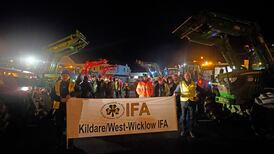How to curb the Russian diamond trade will be considered by the G7 major economies as leaders meet in Japan this weekend to discuss the fallout of the invasion of Ukraine and an increasingly assertive China.
The idea of placing sanctions on the diamond trade with Russia, one of the world’s biggest miners of the gems, was discussed in the immediate weeks following the invasion. But the European Union has now imposed 10 rounds of sanctions without diamonds on the list.
Member state Belgium was wary of the impact on the city of Antwerp, which has been a global trading hub for the jewels since the 15th century.
And because of the nature of diamonds – small, easily transported, enormously valuable – there were concerns that any ban on importing Russian diamonds would simply cause the trade to divert to other global diamond hubs, damaging Antwerp without affecting Russian revenues.
RM Block
But earlier this year, Belgian prime minister Alexander De Croo made it clear that he was willing to back sanctions on diamonds if the effort was internationally co-ordinated, declaring that “Russian diamonds are blood diamonds”.
The number of Russian diamonds passing through Antwerp has plunged anyway since the United States sanctioned Russia’s majority state-owned Alrosa, the world’s biggest diamond mining company.
As leaders meet in Japan, the EU is hopeful that the G7 can agree on and implement an international tracing system for diamonds based on new technology that can identify characteristics that reveal where a gem was mined.
This is crucial to quell fears that India or the United Arab Emirates could become a back door for diverted trade in Russian diamonds into the grand prize in the diamond industry as the most lucrative market: the United States.
Dubai is world’s top hub for trading rough diamonds, while over 90 per cent of the world’s diamonds are cut and polished in the Indian city of Surat.
The issue will be on the table as Indian prime minister Narendra Modi joins the G7 summit on Friday.
An EU official described the issue as deeply sensitive for India and described it as a “diplomatic dance”
“What’s crucial for us is traceability of diamonds,” an EU official said. “We are confident we’ll manage to have results on this.”
The G7 nations, made up of Canada, France, Germany, Italy, Japan, the United Kingdom, United States, and the European Union, have previously imposed co-ordinated sanctions on Russian banks, military organisations, and placed an international price cap on Russian crude oil.
Host Japan has kept in lockstep with the rest of the G7 in sanctioning Russia and condemning the invasion of Ukraine, as it was deeply alarmed at the re-emergence of expansionist warfare and the potential implications this might have for the Asia-Pacific region.
Prime minister Fumio Kishida has declared the main themes of the conference to be upholding the international order based on the rule of law, and the rejection of any attempt to change the status quo by force or by threats to use nuclear weapons.
The location of the meeting in Hiroshima is highly symbolic, in a city where an estimated 70,000 people were killed when the United States dropped an atomic bomb in 1945, in one of only two occasions nuclear weapons have been used in warfare.
Threats from Russia that it may be prepared to use nuclear weapons in Ukraine will be discussed at the summit. So will China’s vast military expansion, as it increases its capacities including in nuclear weapons in an effort described by Australia, Britain, and the United States as the largest military build-up in peacetime.













